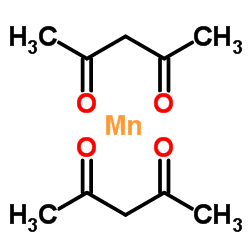| Structure | Name/CAS No. | Articles |
|---|---|---|
 |
Cupric acetylacetonate
CAS:13395-16-9 |
|
 |
Chromium(III) acetylacetonate
CAS:21679-31-2 |
|
 |
2,4-Pentanedione-manganese (2:1)
CAS:14024-58-9 |